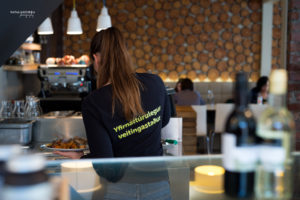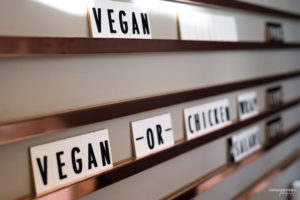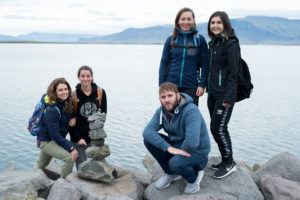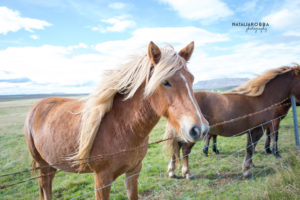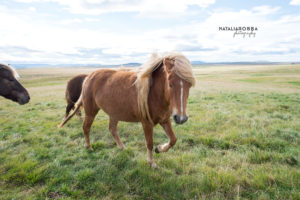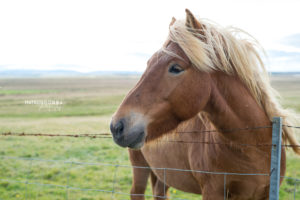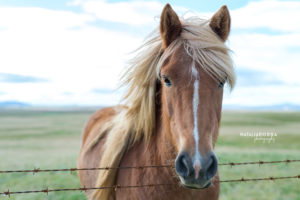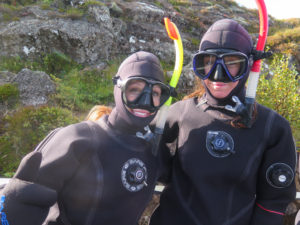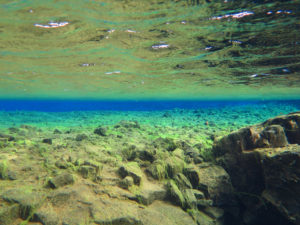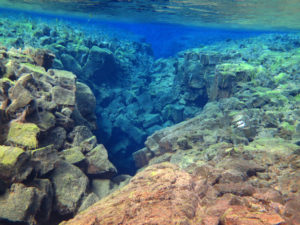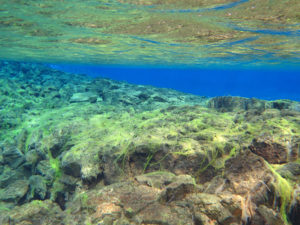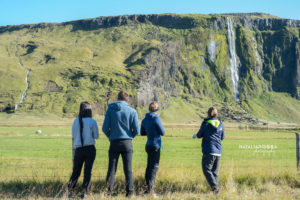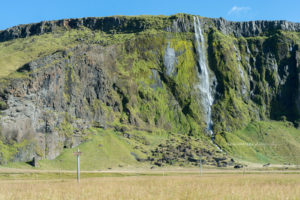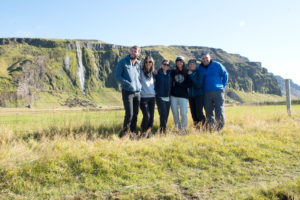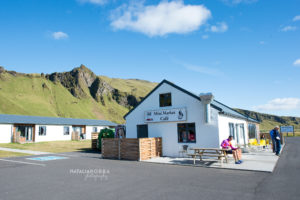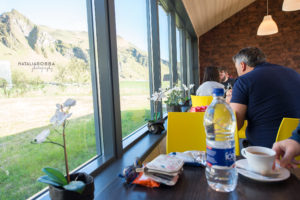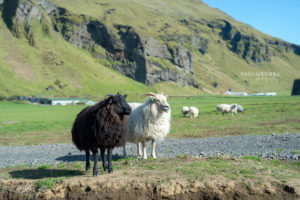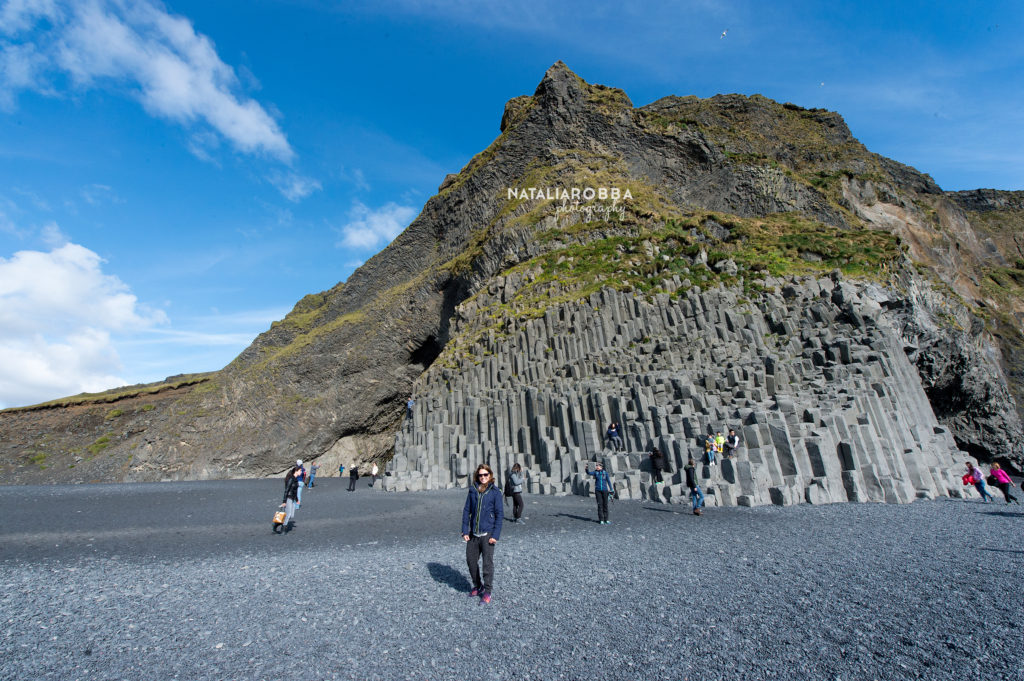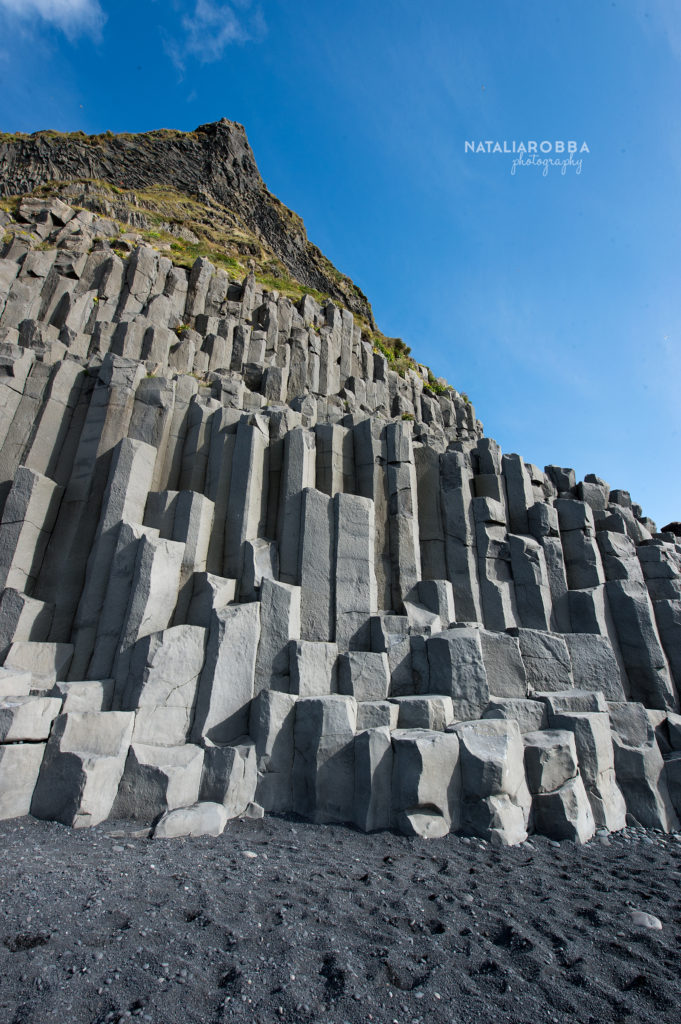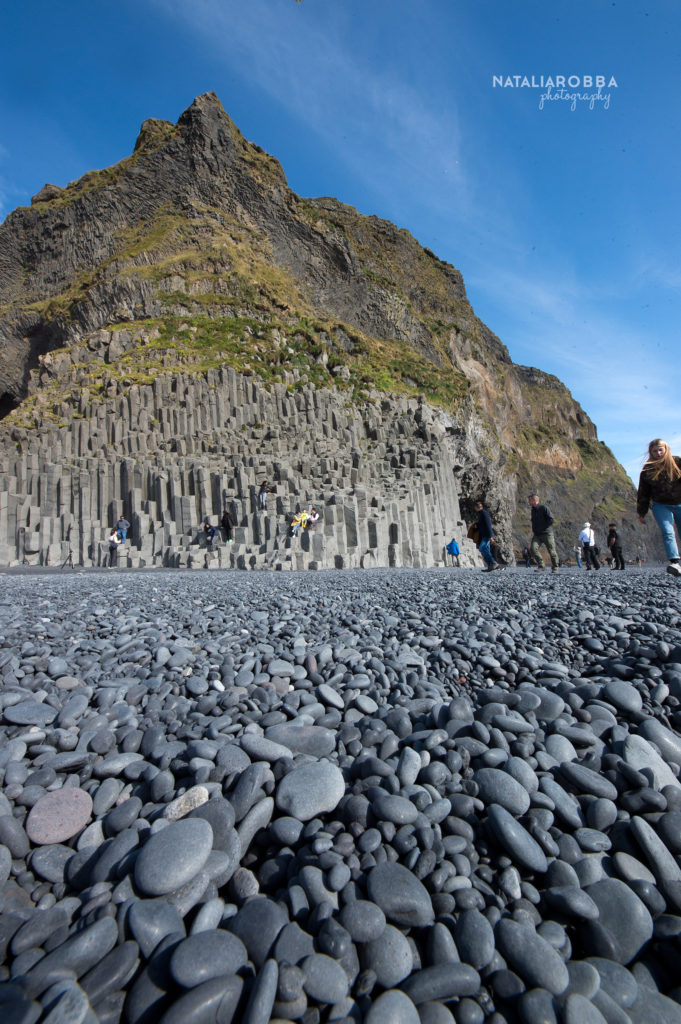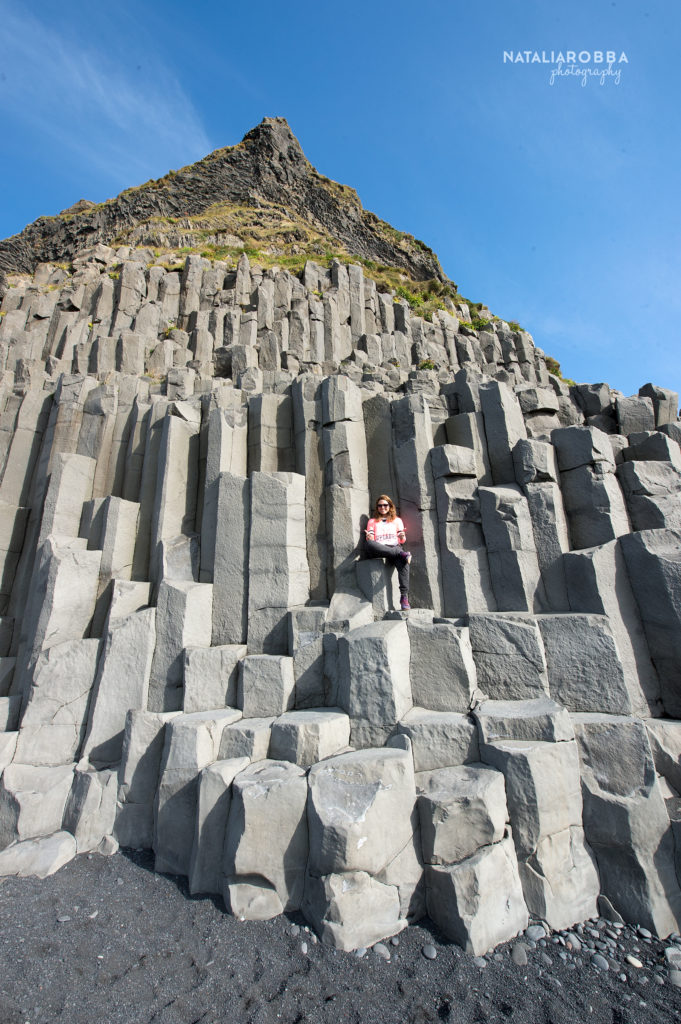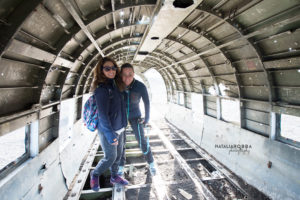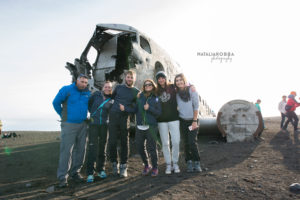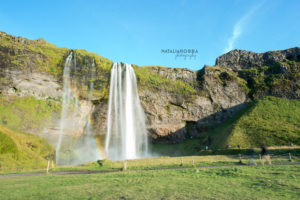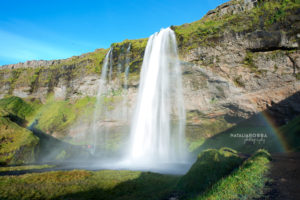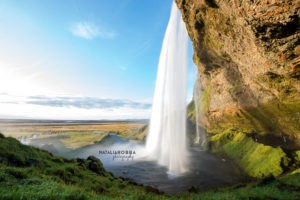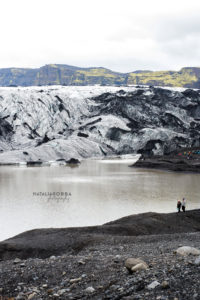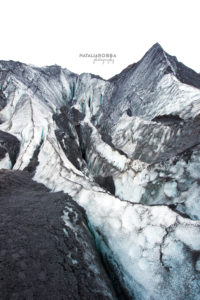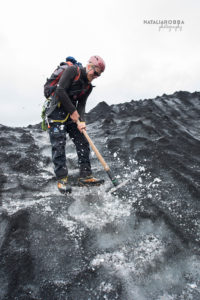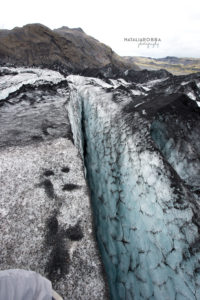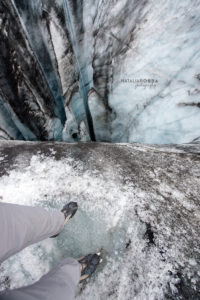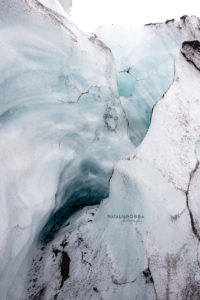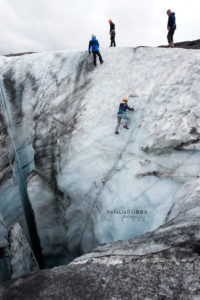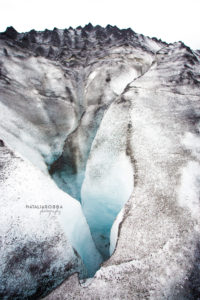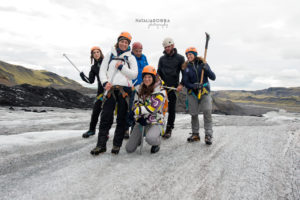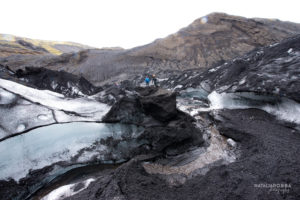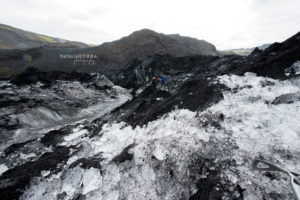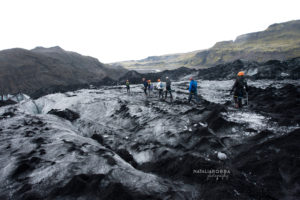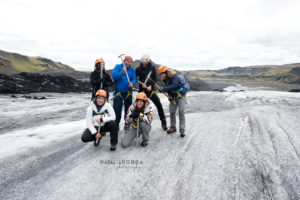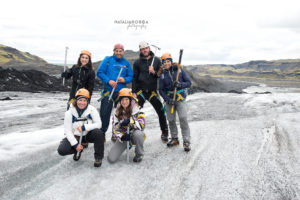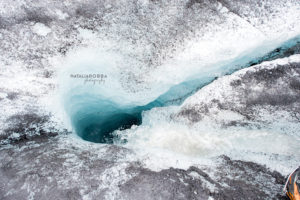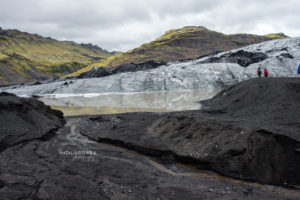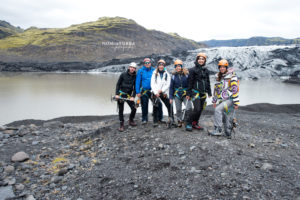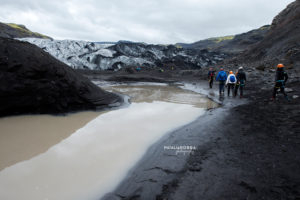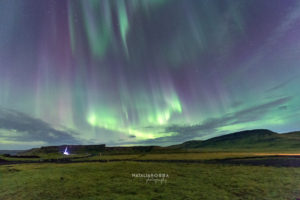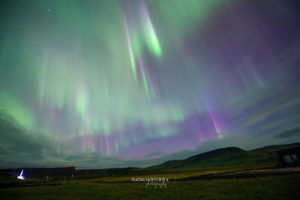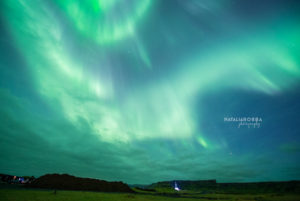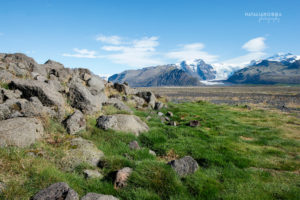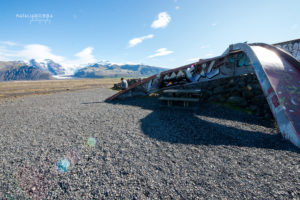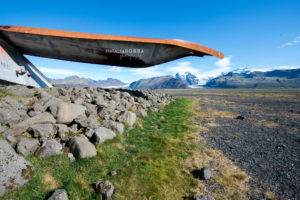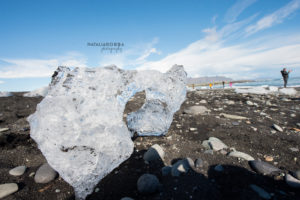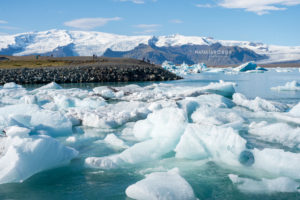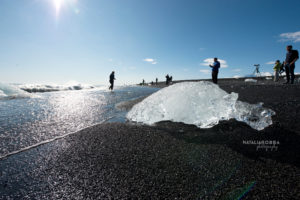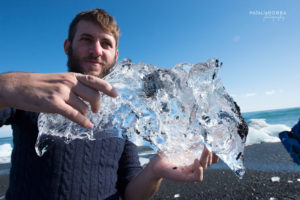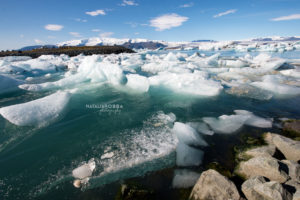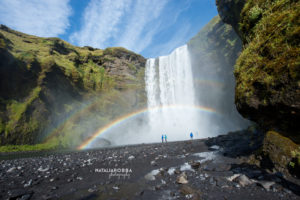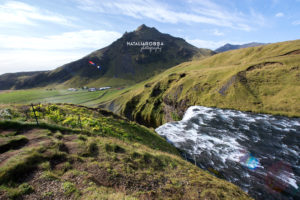Iceland, the land of ice and fire. This land has been on my bucket list of places to travel to for a long time now, both as a Northern Lights destination and as a landscape photographers haven.
I repeatedly postponed my travels here for one reason or another, but honestly mostly due to my affinity for Northern Lights hunting, and stories of the notoriety of Icelandic weather and the mild winter temperatures bringing in cloud cover.
Finally, after harping on about going for years, we booked! Looking back at the trip overall, there aren’t words grand enough to describe just how I feel about this place. It will stay in my heart and mind forever as one of the most beautiful, mysterious & diverse lands I’ve ever visited.
Anyone who has read some of my older blog posts knows I like my statistics, so to get the most out of our Icelandic trip we checked out the best times weather wise in the year to travel there, the general consensus was September! Maybe we got really lucky, or maybe it really is just a fantastic month, but we had amazing weather there for most of the trip, and it really made all the difference.
We spent 8 amazing days on this fantastic and spectacular part of the world, and travelled from Reykjavik along the South coast up to Jokulsarlon National Park, then returned back to Keflavik.
Let’s break it down!
Day 1 – Reykjavik & The Northern Lights
We arrived very smoothly in Keflavik early on the morning on September 8th 2017, after an extraordinarily long wait to pickup our rental car (some very confused young men seemed to be having a hard time understanding their GPS device instructions) we were on our way! The drive into Reykavik was only about 20 minutes and we found our way easily enough to our hotel CenterHotel Arnarhvoll which was really close to the waterfront.
The CenterHotel Arnarvholl was a great location as a base for exploring the charming quirky town of Reykjavik, sitting close to the waterfront with beautiful views over to the famous and characteristic Mount Esja a little further North on the peninsula.
These beautiful mountains which are characteristically covered in snow during the winter months stood out even against the dark Icelandic sea with tones of deep green and volcanic terrain. What a taste of things to come!
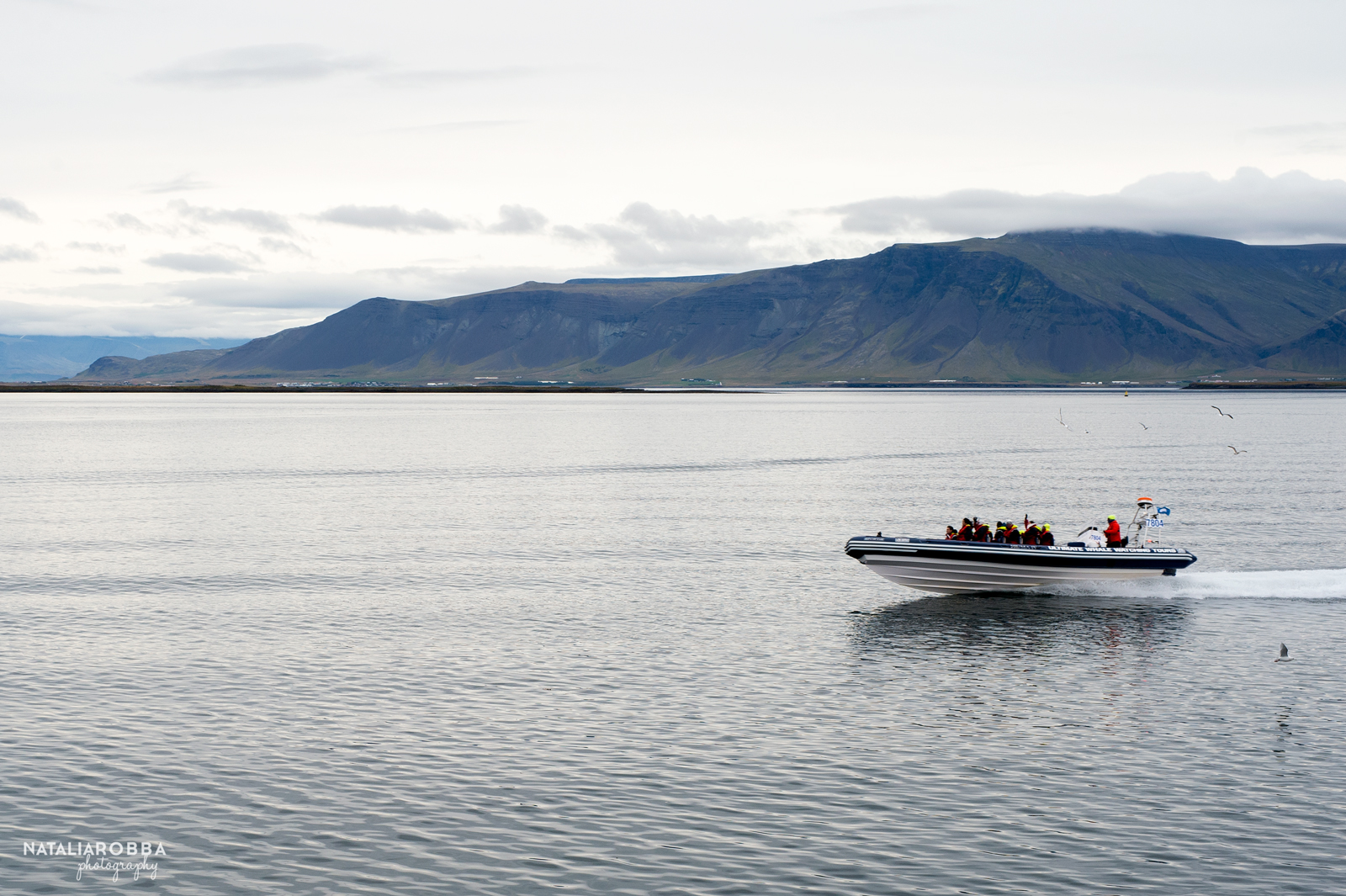
What is there to do on your first day in a new city but explore…and eat ofcourse! We had 2 full days to spend in this famous little town and wanted to sample as many gastronomical delights as possible.
Taking a stroll around the inner parts of Reykjavik city you really start to get a sense of just how unique and different this cute little town is.
The architecture reminded me a little of the houses I’d seen in Tromso over in Northern Norway, cute little scandinavian homes in all of their multi coloured glory with their cute tin roofs.
There really is a very special feel to this town that I can’t quite put into words. All I can really say is it left a positive impression, and has real charm…not to mention the quality of the food. In fact, this is a good time to round up some of the best food offerings & sightseeing spots we found during our short stay in Reykjavik :
This charming little canteen style restaurant was a big hit for us on our first day walking around the city. It was a beautiful sunny day, but quite nippy, so we were in the mood for some warm homecooked food, and we found just the place. Glo’s has several locations around Reykjavik, we found this one on Laugavegur. Pay upfront and choose from a selection of daily specials, with vegan options too!
I went for the vegan lasagna and it was delicious! Even the meat eaters were impressed and went for seconds.
Now it was time for desert of course. We scouted out a nice crepe house in the vicinity, where the crepes and pancakes were deliciously sinful yet light. I opted for a conservative yet scrumptious berry compote on crepes, although I was eyeing up the Nutella, Banana & Creme crepe across the table too.

Hallgrímskirkja Church
After a thoroughly satisfying sweet treat, we decided to head up the street and burn off some of those extra calories and visit the famous Hallgrímskirkja church, in very stark contrast to the surrounding Scandinavian housing, this church is one of the tallest structures in Iceland and in fact the tallest church. Quite unlike anything we see over in Mediterranean Europe and definitely worth the walk (which wasn’t really all that far if I’m being honest)
There seemed to be some sort of street Art exhibition going on on the walk up to the church. I had way too much fun trying to figure out the concept behind this painting here :
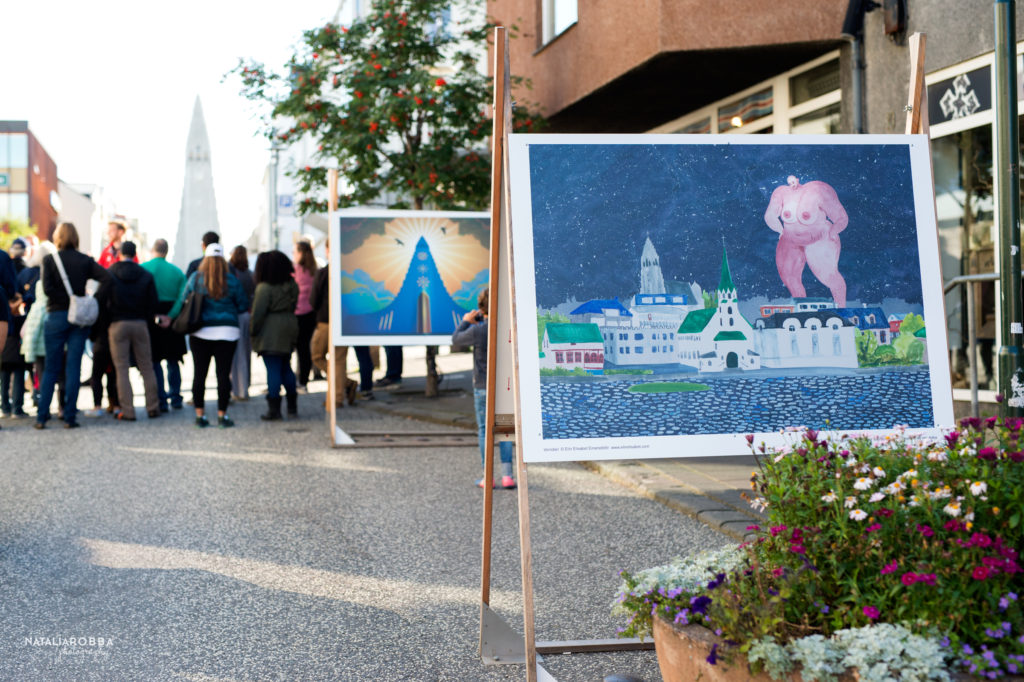
It had been an early rise & a busy day travelling and finding our way over to Reykjavik, so we called it a day and settled in the hotel for a rest for what was to come later that evening.
We weren’t expecting to be heading out in search of the Aurora Borealis until later in the trip, but having recently received news of an impending X flare, there was no doubt in our minds we had to find dark skies that night.
The Aurora Borealis at Lake Kleifervatn
So a little backstory on this X flare, just the day before we were set to start our travels to Iceland, Spaceweather released news of a massive X flare which resulted in a Coronal Mass Ejection (CME) with an earth directed component. I literally could not believe our luck that such an event has taken place just hours before we began our trip.
For those who don’t know too much about solar activity, solar flares are basically explosions of mass amounts of solar material from sunspots on the surface of the sun. They are rated B, C, M and X, with each class being a 10 fold increase from the previous.
Solar flares do not always result in ejection from the solar surface, but when they do, they are called CME’s and hurtle massive amounts of solar particles and respective magnetic field lines, into outer space.
On interaction with our magnetic field, Northern Lights are a strong possibility.
If you’ve read some of my previous Northern Lights posts, you can see I’ve been travelling in search of the Aurora Borealis for over 10 years now, to various destinations over northern Scandinavia as well as Canada. In that time, I am lucky to have seen some spectacular displays of the Northern Lights, however, in all of my previous trips, all of the wonderful displays I’ve seen, all have been a result of either coronal streams or CME’s, the largest of which was an M flare.
So the possibility of seeing X flare calibre Aurora’s was something entirely new and exciting to me, and with it brought the possibility of blowing away displays witnessed in previous years.
X flares of this magnitude literally happen a small handful of times a year at best, so here on our very first night in Reykjavik, we made plans to find a nice dark safe spot to wait for lady aurora.
However…there was an unfortunate setback…the X flare CME was travelling too fast, and was going to arrive a little too early for us. We had to complete an overnight stay in London to board our morning flight to Iceland…and in this time the massive and very fast CME was already on its way to Earth.
It really was a nervewrecking time where I was constantly checking space data and the graphs to see just when the incoming flare hit our magnetic field.
Sadly…we did indeed miss the bulk of the impact, which I really cannot believe to this day. We missed the most intense and spectacular colours and activity I’d likely have ever witnessed, I saw the results of the CME looking at Facebook photos from my Scandinavian, US and Canadian Aurora hunting buddies….missed by a mere 6-12 hours.
While this was a really tough pill to swallow, the impact did leave our magnetic field unsettled, so we did atleast get to see some Aurorae on our very first night there, in the most spectacular of locations a person could ask for, so we still consider ourselves pretty damn lucky.
A quick word of warning about this location as a Northern Lights viewing area, it is VERY popular. Seems news of this spot has been around a while, and a quick google search will reveal it as one of the favoured viewing spots around Reykjavik, the result…constant interruptions with car lights looking for somewhere to stop, and tripods being moved around to accommodate the incoming vehicles in the layby…pretty frustrating! Not the best spot in hindsight and we spent much of the time readjusting our eyes to darkness when new visitors arrived.
Day 2 – Exploring Reykjavik
The next day we made use of our time and walk around as many parts of the city as we could, once again mostly sampling some of its gastronomical delights.
We came across this lovely soup bar where they serve the soup right inside these large buns of bread, how cute is this?
Very delicious and hearty soups too, with some locally brewed beer (not for the faint hearted)
Don’t make cairns!
We spent our last day in Reykjavik walking along the waters edge, visiting the famous Sun Voyager sculpture and each of us adding our own stone cairns to the rocky waterfront seemingly teeming with them. I read up a little about this apparent tourist tradition and only realised afterwards the possible detriment this could cause (sorry!)
Apparently building stone cairns is an ancient Icelandic tradition voyagers used to leave as beacons for other travellers to show them the way. It seems to have spiralled out of control over Iceland where cairns are left as ‘we were here’ markers by tourists all over the place. At best they degrade and damage the landscape, at worst natural stone cairns used for navigation are lost in the background, or ancient cairns which have since become landmarks are destroyed and vandalized unwittingly by tourists. Bottom line…don’t make cairns! Sorry Iceland at least we know better now =(
Continuing our leisurely stroll along the waterfront, you soon begin to see a unique structure appearing in the distance, known as The Sun Voyager.
The Sun Voyager
The Sun Voyager, sculpted by Icelandic sculptor Jón Gunnar Árnason, is not actually a Viking ship at all despite its appearance and location in a land teeming with Viking heritage, its actually a dreamboat and symbolises hope & safe passage to undiscovered lands and as an ode to the setting Sun.
Sadly, the sculptor did not live to see the sculture erected and died just 1 year before from leukaemia in 1989. It is thought that Jon Gunnar conceived of the idea during his lengthy illness, with the voyager ship being the vessel to transport his soul to the realm of the afterlife.
That concluded our visit to Iceland’s viking history laden capital city, Reyjavik. We repacked our bags ready for the next leg of our journey through the famous Golden Circle!
Day 3 – Touring the Golden Circle
Time to start the road trip! We had a pretty full day ahead of us including a visit to the famous Gulfoss waterfall, snorkelling in Silfra and visiting Strokkur geysir…all before heading over to our next stop on the trip in Hella.
Probably one of my favourite stops on this trip was a quick layby stop when we spotted a herd of beautiful Icelandic horses close to the roadside. They were so friendly and inquisitive and didn’t mind stopping for a photo op in exchange for a bunch of fresh green grass.
The weather was pretty good to us on the way up to Gulfoss, but started clouding over and we had a light drizzle as we got closer. Luckily it never got any worse than a drizzle, so we didn’t suffer too much on the walk over from the car park, that didn’t stop the girlfriend from having a whinge though 😛
Gulfoss Waterfall
Gulfoss is one of the most popular attractions in Iceland, and is a 2 stage tiered drop waterfall, largest drop being 21metres. The sheer amount of water rushing over the cascades is immense!
Although the weather wasn’t amazing on our way to Gulfoss, it did open up a bit as we arrived and we got to see some of the iconic rainbow colours created by the sunlight hitting the waterfalls uprising mist. Amazing stuff!
Geysirs & Stuff
A visit to the Golden Circle wouldn’t be complete without a visit to the famour geysirs, especially Strokkur! Strokkur is one of Icelands most famous geysirs, and erupts regularly every 6-10 minutes, sometimes upto a height of 40 metres! Pretty cool.
Litli Geysir (or little geysir) on the other hand, while very cute, did keep us standing there for quite a while before we began to question its eruption periodicity…which to this day remains unknown to us…maybe someone else can comment on this because google hasn’t helped =)
Silfra – Snorkelling between continents
Silfra is a natural rift that exists between the divergent Eurasian and North American tectonic plates in Thingvellir National Park. The plates move away from each other at the rate of approx 2cm per year, which results in tension. This tension is relieved every decade or so via major earthquakes which causes cracks and fissures to form in the rift.
The stunningly clear and crisp fresh waters in Silfra are basically meltwater originating from the nearby Langjökull glacier located about 50km to the North, which makes the water pretty damn cold, approximately 2 degrees year round! The amazing visibility in excess of 70 metres is the result of a half decade process of meltwater filtering as it migrates from the Langjökull glacier through 50km of porous volcanic rock, to later emerge in Silfra as some of the clearest waters in the world!
The diving location also holds particular significance due to the fact you can actually touch both tectonic plates at one time.
Now…I’ll be honest, I was regretting having booked this tour when the day finally arrived, not for any trepidation with the snorkelling but because it was decidedly nippy already and the prospect of dipping more than our toes into this glacial water was giving all of us second thoughts.
We are all very glad we decided to push ahead though, it was an amazing experience, and although bitterly cold on the hands and face, quite comfortable otherwise with the amazing dry suits provided!
What stood out the most for me? It’s got to be the vast array of the most vibrant shades of blues, ceruleans and greens you can imagine in one place, more shades than I even knew existed, absolutely phenomenon colours and a real visual treat!
Stracta Hotel, Hella
After a pretty active day we were ready to drive the remaining 100km from Silfra onto our next rest stop in Hella, Southern Iceland. We stayed at the Stracta Hotel – Hella.
The town of Hella is pretty small, with just 800 inhabitants, with not much going on in terms of restaurants or shops, but it was more than enough to make this a comfortable stop off on our trip, with some fantastic dark skies for potential aurora viewing being a big plus!
Hella got its name from the nearby caves close to the river Ytri-Rangá, which is one of the best Salmon rivers in Iceland. It is said Irish monks inhabited this area in the times of the first settlement. Hella is also close to the famous and most volcanically active icelandic volcano, Hekla.
We had crisp clear skies that first night but unfortunately there was no auroral activity that night, so we made the most of an early night and got some much needed rest.
Day 4 – Exploring from Hella to Vik
Early next morning after a hearty breakfast, we set off on the 100km journey from Hella onto our next stop Vik, with a couple of sights to see along the way. Without any tours or a fixed schedule today we could pretty much stop at any beautiful sight and really enjoy the scenery.
It turned out to be a pretty full day despite no schedule but so fulfilling. We managed to squeeze in quite a lot.
It was a beautiful sunny day, crisp and fresh with the slightest warming embrace of the Sun just enough to allow for comfortable exploring in sweatshirts.
After a quick food refuel, we visited just a little further up ahead the site of the famous 2010 eruption from volcano Eyjafjallajökull.
A little trivia about this 2010 eruption in case you’re interested, it certainly wasn’t the largest eruption, but did wreak havoc on the aviation industry for a few reasons.
- The volcano’s location sets it directly beneath the jetstream which is basically a stream of fast flowing air currents in our atmosphere.
- The second eruptive phase happened under 200 m (660 ft) of glacial ice. The resulting meltwater flowed back into the erupting volcano, which created two specific phenomena:
- The rapidly vaporising water significantly increased the eruption’s explosive power.
- The erupting lava cooled very fast, which created a cloud of highly abrasive, glass-rich ash.
A little volcano trivia for you there!
We took out some time to stop and enjoy the scenery, and take a group photo while we were at it.
All of this exploring made us all a little hungry, so we made a quick pitstop at a cute little roadside stop called the Heimemann Mini Market Cafe just a little further up ahead from the volcano site.
We were able to warm up, have a delicious hot meal and recharge before heading onto the area of Vik.
I also met some very sociable sheep in the adjacent field who were more than happy to pose for a photo set amidst the Icelandic landscape.
So now onto the area of Vik…
Reynisfjara
Next on the agenda for today was a quick visit to the famous Reynisfjara beach, well known for its basalt column formations, which is located just before the coastal town Vik.
It’s hard to imagine nature can sculpt such perfect column like structures but it certainly did! As lava cooled and contracted the formations began to crack in these column formations, during a process known as columnar jointing. Amazing stuff.
The sand itself is not really sand at all, but actual lava which cooled and solidified as it met the ocean and appears as black pebbles.
Vik
Just around the ‘corner’ from this amazing beach, literally, just a short drive around the valley is the charming and beautiful coastal town of Vik, set on the outskirts of a volcanic beach, Vik is infact the southernmost town in Iceland. It has a great selection of restaurants and stores considering its tiny population of just 300 people.
Vik lies on whats considered to be one of the most beautiful beaches in the world, if not a little hostile. There is no landmass to soften the blow of waves from the atlantic, and infact there is always the danger of ‘sneaker’ waves even on good weather days which can drag out unsuspecting victims into the sea.
Folklore says these atlantic sneaker waves are actually trolls who tried to drag out their sea boats in this stretch of coastline but were caught by the rising dawn.
Vik also happens to lie south of the active volcano Katla, which hasn’t erupted since 1918. Katla typically erupts every 40-80 years, so scientists speculate it is just a matter of time. What’s more, in known recorded history every eruption of nearby volcano Eyjafjallajökull (most recent being 2010), has also triggered an eruption in Katla.
Sitting on the Mýrdalsjökull glacier, the result of a massive eruption would result in glacial flooding of the area. Therefore local residents practice regular drills where they rush to the church of Vik which sits at safe elevation.
We decided to make Vik a pitstop and have some lunch, the food was once again absolutely delicious! Laying shame to food standards back here at home. A simple veggie burger was the stuff of gourmet restaurants.
It must have been this food induced high that convinced us all that a trek to the Solheimasandur plane wreck (an 8km round trip walk) was a fantastic idea, a decision I question to this day. So…we backtracked west about 15 minutes and stopped at the Sólheimasandur Parking area and began what we thought would be an easy 8km walk.
Sólheimasandur Plane Crash … after a really long walk
Here’s the thing, you don’t need to be fit or particularly healthy (physically) to complete this walk, its all set on a level ground, flat as the eye can see, 4km there, 4km back. However, I do believe you need to be of very sound mind! I am convinced this 8km round trip could be used as a means of torture. The endless unchanging barren landscape to and from this otherwise very interesting site will stay with me till the end of my days.
The walk over to the site wasn’t too bad, with the anticipation of the wreck appearing above the horizon enough to keep us all happily plodding along, but the walk back well…by the end of it we’d all stopped talking and were all so desperate to get back to that car park just for some sort of change to our immediate monotonous and purgatory like existence that we all pelted it as fast as we could back.
Ranting aside….the wreck itself is very interesting. Considering there were no fatalities in the crash of this United States Navy Douglas Super DC-3 airplane on Sólheimasandur’s black sand beach on November 24th 1973, one can enjoy the slightly dark nature of such an attraction. Pilots were forced to land after severe icing, and luckily all the crew survived and abandoned the fuselage.
Sadly as more time goes on, the wreck is becoming increasingly vandalised, even despite the ban on car access in recent years, this hasn’t stopped people from travelling over there and leaving their mark on this historic landmark.
Seljalandsfoss Waterfall
After recovering from our mental ordeal at the car park, and since we missed the Seljalandsfoss waterfall on the way east, we decided to make a last minute mad dash back (west) to this famous waterfall and try and catch the beautiful evening light at the waterfall just before the sun set.
We literally made it just in time, luckily it was just a 10 minute drive back from the car park. The waterfall and surrounding landscape were bathed in the most beautiful golden sun set light, I had just enough time to capture as many photos as I could, before the whole area was shrouded in grey as the sun sank below the horizon. Could not have been any happier making this!
Seljalandsfoss has to be my favourite waterfall from this trip, even more so than Skogafoss (later on), not so much in terms of sheer force but beauty, position on the landscape and the fact you can walk behind it and get phenomenal photos of both waterfall and the Icelandic coastline backdrop.
What an amazing and fulfilling day. We were all exhausted with wearing cheeky little smirks by the end, like a bunch of people who really couldn’t have managed to squeeze an ounce more of goodness from the day.
What about Skogafoss?
Very close to Seljalandsfoss is the might waterfall Skogafoss. We did attempt to stop at this sight, however due to its position on the landscape it became obscured in shadow earlier in the day compared to Seljalandsfoss, so….we decided we would return to this waterfall on our return trip…
For now, we returned for our last night at the Hotel Stracta for some rest before tomorrows Iceclimbing and trip over to Kalfafell
Day 5 – Iceclimbing & The Northern Lights
The next morning, we made sure we had a good breakfast, fuel for our upcoming glacier & ice climbing tour. We headed out and drove to the arranged meeting point at the Sólheimajökull glacier car park and were told to wait by the big yellow bus! Very cute, there was actually a big yellow bus parked in the middle of a large parking lot. We decided to go with Arctic Adventures and chose the Blue Ice tour, we were very happy with our choice. All of the tour guides were really friendly. Our tour guide was ‘Bori’, he was really knowledgeable and it was interesting to watch him gracefully swinging a giant axe and sculpting some little steps for us to climb certain parts of the landscape.
He also informed us a little about the glacier itself and the unfortunate recession its currently experiences as a result of global warming. Just a decade earlier back in 2008, the glacier began 200metres earlier, right where the car park currently sits. As it stands now we needed to walk about 15-20 minutes from the car park to reach the start of the glacier. Here is a short article with more info on the glaciers retreat – Arcanum – Sólheimajökull Melting and also a video timelapse of the glaciers recession here :
We started off the tour with a safety demonstration and introduction into the crampons (cool spiked shoes that make it easy to walk over the ice), our helmets, and our little axes to be used for ice climbing and random hacking away of any cool ice protrusions we found along the way.
The glacier was just phenomenal, we were able to see all sorts of natural ice formations, chasms, and caverns, with some areas showing some of the beautiful characteristic blue ice that gives the tour its name. The tour took us all the way up to the glaciers plateau where we could see right over to the carpark area, and all of the Icelandic landscape beyond.
After a very enjoyable 2 hour trek we returned to basecamp and then drove the remaining 150km onto our next stop at the Fosshotel Nupar in Kalfafell where we all enjoyed a much deserved dinner.
We chose the Fosshotel Nupar due to its location midway between Vik and Jokulsarlon National Park and of course due to the low light pollution as a base for Aurora viewing and astrophotography.
The hotel itself was lovely, we got one of the newly refurbished bedrooms at the end of one of the hotel wings and were very happy with it! One step outside the room and you found yourself under pitch black skies, a wonderful base for Northern Lights hunting.
Aurora Borealis over Fosshotel Nupar
It wasn’t meant to be an early night though, for good reason! Luckily Earth’s magnetic field was set to receive a glancing blow from an X flare CME, which was initially reported to be a miss.
I began watching the charts during dinner in the restaurant area and could see ACE data start to show signs of impending activity as our magnetic field began to tilt south and solar wind density increased.
We put on our outdoor clothes, headed out with our equipment and waited. Surrounding us on either side above the mountains to the North and above the sea horizon to the south were dark clouds, however, as if a gift from the heavens directly above us a clear band of dark, cloud free skies.
It wasn’t 30 minutes before we started to see the first signs of the northern lights, initially they started off pretty weak as a band across the sky, but before long increased exponentially to the first of 2 overhead coronas, where shades of violets and bright whites were visible twisting and undulating into all sorts of beautiful patterns and swirls above. Here was a shot from the first corona we witnessed that night :
Then they began to take shape just above the Northern mountain range where dark clouds threatened to obscure the dancing lights, luckily they remained at bay as if a gift from the gods.
Before long most of the sky was alight with the dancing of the Aurora Borealis in all directions around us, it was hard deciding which way to face my camera, so I decided on some time lapsing so I could just stand and observe.
Distant yelps of excitement could be heard across the hotel grounds from excited guests, although we couldn’t see each other.
Here are the results of the timelapse video for the Northern Lights over Fosshotel Nupar in Kalkafell, Iceland on September 12th 2017.
Day 6 – Jökulsárlón & Astrophotography
Our last day travelling east took us on a 98km trip to the South East of Iceland to the famous glacier lagoon. Since we had no particular schedule today we took our time driving over, made the most of our time along the route and taking in as many scenic views as we could.
The drive over to the National Park outskirts was just spectacular, with the distant snow peaked mountains coming into view casting a strong contrast against the deep green valleys and black lava fields below, until eventually the mighty Vatnajökull glacier took up much of the landscape.
Our first scenic stop was quite a peculiar one with an interesting backstory. Driving along the road heading upto this scenic stop you quickly realise that something far up ahead just doesn’t look quite right. Initial impressions are that there is a stray piece of highway sitting right in the middle of a beautiful vast open field, surely it can’t be…
Turns out it was actually a broken piece of highway washed far inland due to the effects of glacial flooding from Vatnajökull seen due North of the picture below. I can’t even begin to comprehend the sheer force required to move such a massive structure so far inland.
The scenic drive also lead us up to this little village of Hofskirkja with a cute little church with grass laden roofs.
Jökulsárlón Glacier Lagoon
Just a short drive further after the church of Hofskirkja, we arrived at Jökulsárlón.
What a sight it was driving up that road and finally seeing the massive glaciar lagoon on our left hand side. We parked up in the guest parking lot and explored the lagoon and then Diamond Beach just across the motorway from the lagoon.
You can see by tracing the lagoon back to its origins that this is a direct result of glacial melting from the Breiðamerkurjökull glacier, which is part of the larger Vatnajökull glaciar. Meltwater from this massive glacier rushes down the valley through a waterway, and eventually flows into the atlantic ocean just beyond the black sands of Diamond beach.
I attempted to quickly dip my toes into the arctic water to get a better vantage point for a photo of one of the icebergs, but…admittedly the stabbing sensation in my feet from the temperature of the water was a little too much for sensitive me.
We started our trip back to spend our final night at the Fosshotel Nupar in Kalfafell and made a few other short stops along the way, appreciate the last of the scenery while we had the chance.
One of our stops on the way back to the hotel was a scenic outlook where the reflections of the now far away glacier of Vatnajökull peeking over the mountains could be seen on the cerulean lake just up again, with the green blades of grass casting a nice contrast and adding to the scene, it looked picture perfect to me, so I hopped out the car for a quick photo pitstop.
Just a 5 minute drive further west from the Fosshotel Nupar, we found what looked like some rapids that perhaps originated from a nearby waterfall, perhaps the nearby Foss a Sidu. We didn’t explore further but visited this lovely sight just off highway 1. The sun was just beginning to set here and I loved the light it cast on the water, grass and nearby mountain range.
That was it for our penultimate day in the region. We circled back to our hotel which was just a 5 minute drive away from us, and settled in.
The Night Sky
That night at the Fosshotel Nupar, auroral activity had dropped to really low levels. The plus side to this being I could relax in the evening without watching ACE data (or atleast only checking it every hour or so 🙂 ) We had a long drive back to Grindavik the next day, so this break was welcome.
It also gave us a little time to dabble in some astrophotography.
I can honestly say the skies under Kalfafell in this region of Southern Iceland, are the darkest clearest skies I’ve witnessed in my life so far, even darker than the skies in Islamorada, Florida Keys.
The Milky Way was visible as a pale white cloud overhead and sitting over the hotel, so I set up the shot and captured this :
This was a single 25 second exposure at approx 3200ISO. Pretty happy with the shot. Also caught 2 shooting stars in there too can you see them both?
Now for some rest, tomorrow we needed to head back towards Grindavik where we would spend 1 last night before heading home.
Day 7 – Skogafoss & Grindavik
So that was it for our time on the south east cost of Iceland. Next morning we packed our bags, had a good breakfast and made a start on the 300km journey back west over to Grindavik, where we would be spending our last night before heading home.
There was just one last stop to make on our return journey west, the mighty waterfall Skogafoss.
We missed our chance to see this natural beauty on our way east due to the nearby mountain range casting a large shadow over the waterfall, lighting is everything. So we visited the site on our return under a beautiful afternoon glow and were rewarded with several intense colourful rainbows, taking form thanks to the suns reflection on the uprising mist created from the power of the falls.
We then decided it might be a good idea to climb the adjacent staircase, which leads all the way to the top of the waterfall for views of the valley beyond.
Really not as fit as I thought I was, it was a quiet ascent with no one really able to speak much for laboured breathing! A little bit of unplanned cardio, but the view at the top was spectacular.
What a great way to end our road trip, we managed to see pretty much everything we had on our list, and luckily had spectacular weather throughout.
We stopped off for lunch a little while later at a really cute little art cafe called Eldsto Art Cafe in the little town of Hvolsvöllur. We’d read great things about the food on Trip Advisor and it didn’t disappoint.
One thing that has really been consistent throughout our entire trip is the high standard and quality of food throughout, sure…it was a lot more expensive than I expected (although I had been told about this), but anywhere you stopped, any truck stop, any cafe, restaurant, heck even the petrol stations, had high quality stuff.
Most of us tried the soup of the day with homemade fresh bread, it was delicious!
Then we all sampled the homemade burgers, I had the vegetarian variety. The sweet potato fries as a side were so good too. Everything from the bread to the quality of the ingredients could just be tasted throughout, we left very happy and satisfied for the last leg of our return journey to Grindavik.
Thank you Eldsto Art Cafe =) I thoroughly recommend this at least as a pitstop, they even have accommodation too.
130km later we arrived at our last hotel on the trip, in the peculiar little town of Grindavik.
I say peculiar because it is quite unlike any of the other towns we’d visited so far. Grindavik is a small fishing village with a population of just over 3000 inhabitants.
I can’t say too much about Grindavik, we only stayed the night, but we noticed a lack of restaurant facilities and had quite a bit of trouble finding somewhere to eat.
We drove to a couple of petrol stations after giving up on the restaurant front but oddly found all of them only stocked large amounts of sweets.
In the end we settled for snacks in the room and held on until breakfast the next morning.
Farewell Iceland
It was bittersweet, the next morning, having to say goodbye to this magical part of the world.
I’d waited years to visit the mysterious lands of Iceland, and it more than delivered and greatly exceeded my expectations.
We had managed to visit the vast majority of the sites we’d had on our list, and got many more beautiful surprises along the way, learnt about Icelandic culture, sampled the delicious local delicacies and left the country with not just our tummies well fed, but our souls rejuvinated.
Iceland, we love you! We will definitely be returning in the near future to drive some of the other coasts of Iceland, but top on the agenda, the West and North coast, over to Akureyri.


